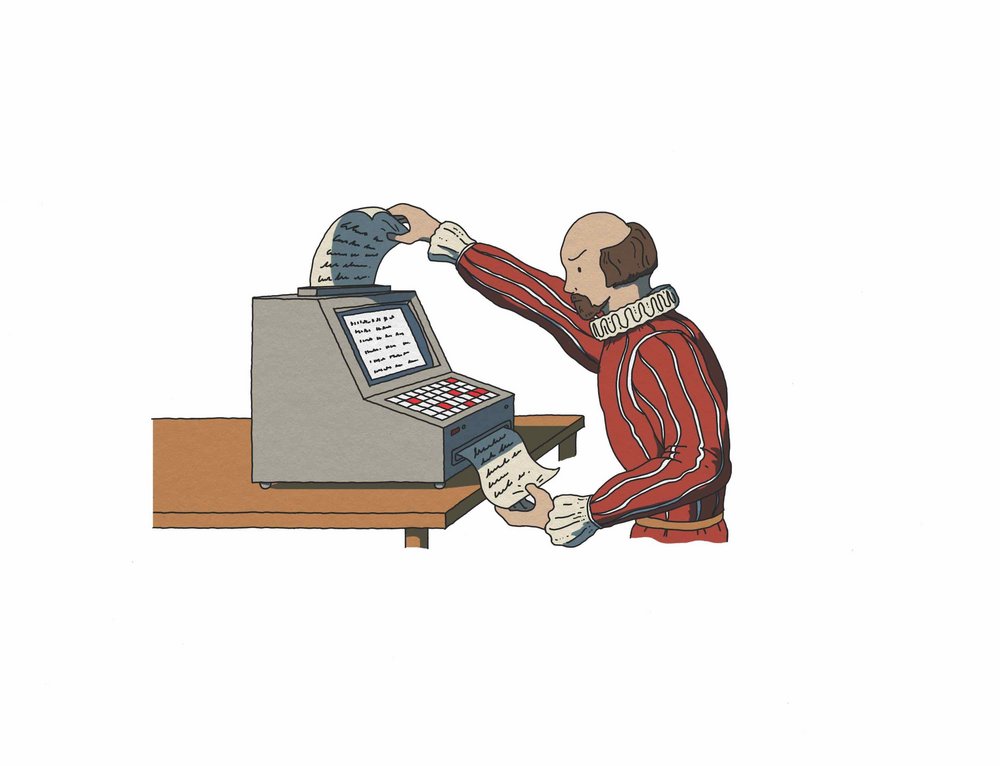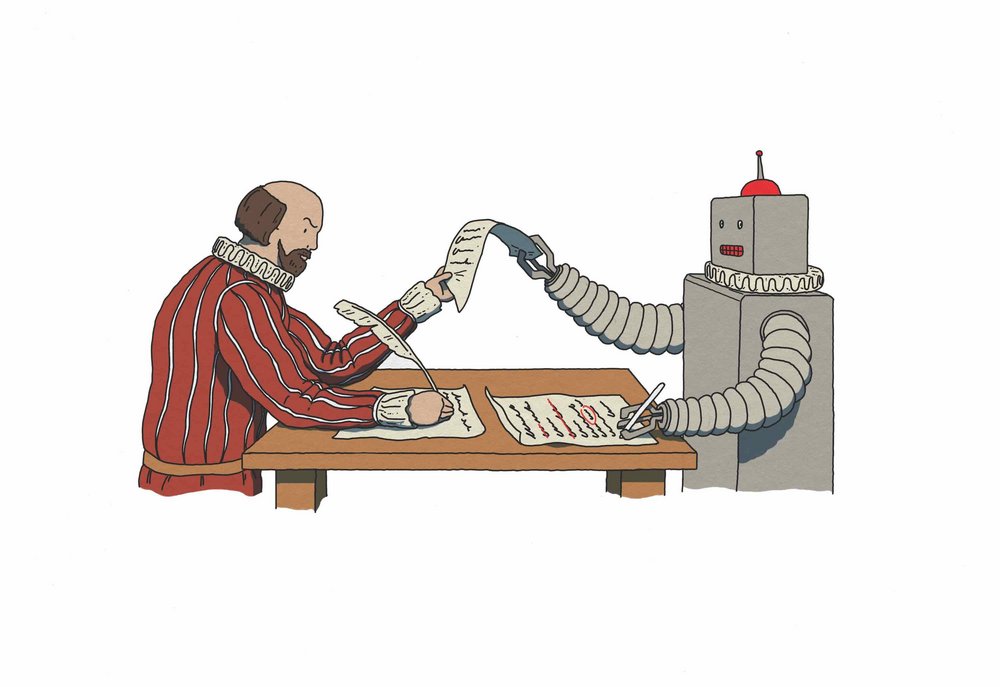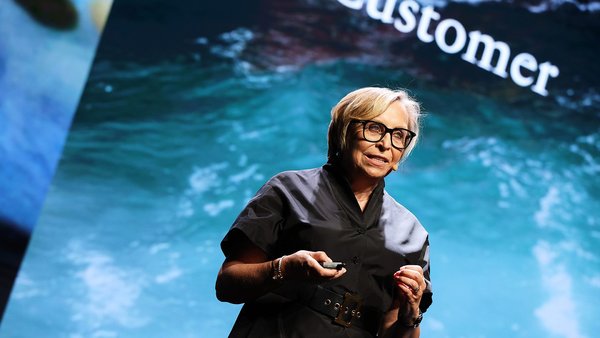Storytelling expert Frank Rose on narrative thinking in a digital age /
Technology has turned the whole world into storytellers by giving us new means and new motives to share our tales. Journalist and author Frank Rose discusses how stories shape our reality and how to navigate narratives in a digital world
James Swift
/
Frank Rose has been telling stories professionally his whole life. He has written about New York’s emerging punk rock scene for The Village Voice, explored subcultures for Esquire and documented the intersection of media and technology for Wired. Rose has also written half a dozen books, including a chronicle of the world’s most famous talent agency, William Morris (now WME), and an account of Steve Jobs’ ousting at Apple (Rose describes Jobs as ‘every bit as forceful a personality as you’ve heard’).
But for the past decade or so, Rose has shifted his attention from telling stories to dissecting them, researching how technology has collided with humanity’s innate need for narratives.In 2012 he wrote The Art of Immersion about how technology was changing film-making, advertising and other storytelling professions, and since 2016 he has taught an executive seminar on Strategic Storytelling at Columbia University. In his latest book, The Sea We Swim In, Rose explains the science of how narratives shape our reality and how the internet has broken the spell of passive consumption.
We asked him what effective brand-building storytelling looks like in a data-driven world.
What made you so interested in stories and convinced you that narratives have the power to shape how we think?
I got increasingly interested in this as my Columbia programme evolved. Paul [Woolmington, now CEO of media agency Canvas Worldwide] and I created this programme together, and along the way I got more and more intrigued by the whole process, especially when I started digging into [psychologist] Jerome Bruner and his writings, and these two key ideas that he had. One was that stories are as important to study and to understand as logic and reasoning. Until [the mid-1980s] scientists had almost entirely ignored stories; they were considered frivolous entertainment. Bruner argued that it was just the opposite.
And the second point that he made, which is very much related to the first, was that people construct their own reality. Bruner’s point was not only that we construct our own reality, but that stories are the chief means of construction. As Joan Didion said, we tell each other stories in order to live. But I think we also tell each other stories in order to figure out how to live.
And that led you to the body of cognitive science work that explains how our brains respond to stories?
That became increasingly fascinating to me, the idea that there’s been all this cognitive psychology and neuroscience research in the past 20-25 years that looks at how we process stories in the brain. The short answer is we seem to process stories in the brain by simulating in our heads what we’re hearing, or reading or watching. That’s why we get scared at horror movies, right? We objectively know that we’re sitting in a seat in a movie theatre, or at home, and nothing is probably going to get us, but it doesn’t matter. If you compare and contrast stories with logic and reasoning, stories appeal to the emotions, and we respond to them in an emotional manner.
That’s really important to understand, because we have this idea that we are rational creatures. Economists used to call us rational actors, in the sense that we would always do what made the most sense for us personally, which is clearly not the case. This sense of rationality, of logic, I feel like it’s an aspirational goal. I mean, it’s nice to have, but it’s not something that we can count on as a species.
The theme of The Sea We Swim In is that technology has made us all storytellers, or at least more aware that we are. Why have machines, things we associate with logic and information, had such a profound effect on storytelling?
The reason that computers and networks and so forth have encouraged us to be storytellers is that they’ve freed us from the idea that we can only be the subject of one-way broadcasts. What computers and networks do is provide a feedback route. And that ends up bringing us back to a situation that existed in the pre-industrial world, where we were all storytellers because that was almost the only way to be entertained.
Books existed, but until the mid-to-late 19th century most people were still illiterate. [Law professor and activist] Larry Lessig has, in one of his books, a wonderful sentiment by bandleader John Philip Sousa, who talked about ‘these infernal machines’, meaning record players, because in the old days people would gather on their porches and sing to each other, and this was not going to be happening anymore. Machines of the analogue era were optimised for one-way communication, whether it was a printing press or motion-picture camera or whatever. By introducing this feedback route, digital technology introduces, number one, we can be storytellers, and number two, we’re not passive consumers of stories, or music or anything else. We’re co-creators in the sense that we co-create stories with the author in our heads.
And then there’s also the way that, by introducing this feedback loop, digital technology made it obvious that we all wanted to be storytellers, hence fan fiction, which had existed before but was largely hidden because it was only available to enthusiasts. But suddenly, digital comes along and anybody can publish anything anywhere, and all this fan fiction emerges and you get huge copyright issues, but you also end up with, in a few cases, enormous bestsellers.
Frank Rose

What is the defining trait of storytelling in the age of data?
The main thing is this realisation that there’s not just one feedback loop, there are myriad feedback loops. And there’s this realisation that as an audience we can not only create the story in our heads and not only write fan fiction, but we can participate in myriad different ways. Stories don’t exist in one form anymore. There are all kinds of ways in which they can exist, in which they can be told and in which we can be enlisted to help tell them.
Does technology change the fundamentals of stories – narrative arcs, protagonists – or just how we tell them?
For the most part, they don’t change. I think the way we respond may change [but] I don’t feel that our basic impulses change all that much. It’s just a question of what the technology makes possible.
What is the role of storytelling specifically within brand building and marketing?
People are more and more resistant to advertising, people are more and more media savvy, and they’re increasingly resistant to having their entertainment interrupted by ads. This becomes especially the case in the US where you have 22 minutes of show and eight minutes of ads, and often the same ads will be repeated. It’s just insane. So it’s no secret that people have been trying to avoid them for a long time and technology has made it increasingly possible, whether it’s skipping ads on TV, or blocking them online. There are a great many people who just don’t want to be bothered.
At the same time, the idea that you need to tell the consumer all the great things about your product – which traces back to the 1950s and the still-antediluvian era of advertising, with the idea of the unique selling proposition – becomes increasingly out of date because if we want information about a product, we can get millions of results in under a second. So the idea that we would want the advertiser to tell us all the great things about their product becomes absurd. What we do like is to be entertained, and that’s what stories do. If we can be entertained by your story, it becomes memorable, and the product that’s associated with it can become memorable for the same reason.
There are some cases where ads might be successful as entertainment vehicles but don’t have any effect on sales. But I feel like that’s not so much a storytelling problem as a product problem. There’s the case of Budweiser, which people in the US have been drinking in decreasing quantities for years and years now, and nothing seems to change it: not when they show ads and talk about how great it is, and not when they show ads that use it in a story somehow. There are things obviously that stories can’t do, and one of them is make up for a product that a large swath of the public has issues with.
Frank Rose
What advice do you have for brands that want to introduce storytelling into their marketing?
The origin story is an obvious place to start because everybody likes to hear or watch or read stories about other people, especially people who have started what ultimately becomes a successful or at least interesting company. So that’s an evergreen story idea. I think customers are fair game for story subjects; people like to know how other people are buying and using a product.
There’s this idea of ‘start with why’ [from Simon Sinek’s book of the same title] and I think that’s important. It’s a great idea, because people really want to know not just who you are but why you’re doing what you’re doing. One of the points of that book was what really differentiates you, what makes you different from anybody else who might be offering the same kind of product or service, is why you’re doing it. There’s hardly a better example of this than Apple under Steve Jobs. The personality that he gave Apple’s products and the underlying approach to life is very compelling, and it resurrected Apple from a near-death experience.
What do you mean when you say in your book that the attention economy and experience economy are two sides of the same coin?
The idea of the attention economy follows from [political scientist] Herbert Simon’s notion in the late 1960s to early 1970s that information was reproducing at an astonishing rate, and for the first time in history we were approaching a point when the amount of information available was going to exceed the amount of attention that we could give it. This created a reversal of how things had worked throughout history. For almost the entirety of human history, there was too little information, and now suddenly we have so much information that we can’t really consume it, hence we have ideas like big data, which can be extremely useful and helpful if we know what to do with it, but so many organisations don’t.
That’s related to this idea that Joe Pine and James Gilmore write about in their book, The Experience Economy. Their premise is essentially that advanced Western economies had moved from a manufacturing economy to a service economy and now are moving into an experience economy, and what they mean by that is, to differentiate yourself as a company, you have to offer something different. Widgets have become a commodity, hence they become cheaper and cheaper, and you have to move manufacturing offshore in order to compete, and so basically you’re competing on price. [Commodification has] happened with services too, so what differentiates you is the experience you can offer, and it’s like literally everybody’s on stage.

You talk about platforms a lot in the book. Why are they important to storytelling?
The idea of platforms relates to [shows] like The Walking Dead [and] everything that’s built up around them: some of them [spin-off] shows, some of them online videos, but also stuff that’s participatory and involves playing games. So that’s what I mean by a platform, but it occupies an anomalous position in what’s considered platform economics, because the received opinion about platform economics from the economists who started writing about it 20 years ago is that a viable platform connects different groups of people with each other.
An obvious example would be something like Uber, which connects drivers with riders. And so that has an obvious benefit; instead of making something, you’re creating a marketplace where people can find each other. It’s typically less capital intensive and often less risky. But with a story platform, with a narrative platform, what you’re doing is connecting people, not just with the story but with each other, and the fan interactions that happen can be quite intensive. And it’s not just entertainment properties that this applies to.
The way that MailChimp gets its best customers and its best partners together with one another, that sort of thing can be very effective. So with narrative platforms, you have not just one story to play with, but potentially dozens of them. And that means that you have more opportunity to get people involved, to help people, and your more committed fans are going to want to go deeper and deeper into your story and are much more likely to proselytise for you.
Frank Rose
In your book you describe a model – stock, hub and flow – to manage narrative platforms. Can you explain this and how it might apply to a brand?
Everybody is familiar with the idea of stock and flow, stock being your capital and flow being the flow of money, or other resources, in and out. When Paul Woolmington and I were putting together the Columbia programme, we were playing with this idea and we added the hub as something that you might call the interface between the stock and the flow. The hub is sort of like the engine. So if you’re going to apply this to commerce or any kind of business, your stock is what is expensive to produce and has high value and long-term value. Stock would be a Super Bowl ad or a Christmas ad in the UK. If you’re a retail operation, it’s your stores. And flow is essentially social media. It’s kind of ephemeral but important for connecting with people. And our conception of the hub is as the engine that keeps all this running. So hub properties would be the things that are relatively expensive but involve a lot of interaction; any commerce site is a really good example, or a website in general.
What do you think the future of storytelling holds?
What I’m focused on at the moment is things like deep fakes and how AI can change storytelling, for better or worse. I think the outlines there are a bit clearer than they were. With AI there are so many challenges and so many things to explore. Can a machine tell a story? I feel like at this point they’re sort of like the monkey typing Shakespeare, except the monkey is actually starting to type Shakespeare, and so that’s disconcerting. Then there’s stuff like deep fakes, which are pretty scary – the idea that people can be either generated out of whole cloth, so to speak, of people being apparently made to say things that they never said. We’re having a hard enough time deciding on reality as it is.
I interviewed some people about that for the book, and there was a CEO of a company that tries to uncover deep fakes, and his comment, which I found rather provocative, was that we had been living in a time when there was media to record anything that happened, but we didn’t have the ability to alter the media in any convincing way. But that began to break down with Photoshop, and now with deep fakes, it’s starting to break down entirely. His point was that future generations will think we were incredibly naïve to believe anything that we saw.
Get Contagious Membership /
Want more expert interviews? Contagious members get access to Q&As with leading thinkers on a range of subjects, from marketing and gaming, to sustainability and equality. To find out more about Contagious Online or to arrange a free trial, click here.
Want more of the same? /
We don’t just write about best-in-class campaigns, interviews and trends. Our Members also receive access to briefings, online training, webinars, live events and much more.







